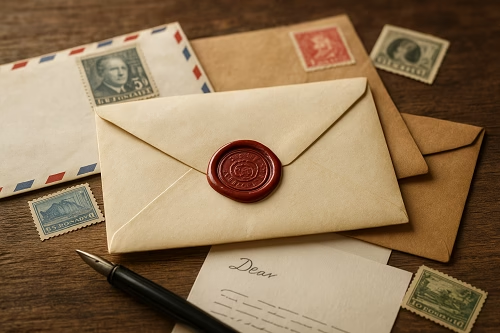
Can You Mail a Letter with a Wax Seal?
Table of Contents
- Introduction
- The Tradition of Wax Seals
- Can You Legally Mail a Letter with a Wax Seal?
- Mailing Considerations: Modern Postal Systems
- How to Properly Mail a Wax-Sealed Envelope
- Conclusion
- Frequently Asked Questions (FAQ)
1. Introduction
Wax seals have a timeless charm. They instantly elevate a letter or invitation by adding elegance, personality, and tradition. However, here at Premium Wax Seals Canada, one common question arises: can you actually mail a letter with a wax seal? The short answer is yes, you can, but there are a few important details to consider if you want your envelope to arrive safely and in style.
2. The Tradition of Wax Seals
For centuries, wax seals were used to authenticate documents, protect letters from tampering, and convey prestige. Historically, nobles, monarchs, and officials sealed correspondence with unique stamps that carried their family crest or insignia. Today, wax seals are less about security and more about artistry. They appear most often on wedding invitations, business branding, or personal letters where presentation matters.
3. Can You Legally Mail a Letter with a Wax Seal?
Yes, postal services allow letters with wax seals. The wax itself does not violate mailing regulations. However, mailing issues often arise not from the legality of the seal but from the mechanics of the postal system. Because envelopes travel through automated sorting machines, wax seals can crack, fall off, or even cause the envelope to jam if precautions are not taken.
4. Mailing Considerations: Modern Postal Systems
While wax seals are beautiful, mailing them requires thought. Here are a few challenges to keep in mind:
- Sorting Machines: Automated equipment can crush or scrape off wax seals.
- Thickness & Weight: Wax adds bulk, which may require additional postage.
- Surface Damage: The raised seal might tear the envelope or get damaged in transit.
In many cases, mailing a wax-sealed letter without extra protection is risky. Fortunately, there are solutions.
5. How to Properly Mail a Wax-Sealed Envelope
To ensure your wax-sealed letter arrives intact, follow these steps:
- Place the sealed envelope inside an outer envelope. This protects the wax from machinery.
- Use hand-canceling services. Ask the post office to hand-cancel your envelope, meaning it will bypass the sorting machines.
- Consider non-brittle sealing wax. Flexible or mail-safe wax is designed to withstand mailing conditions.
- Weigh your letter. Because wax adds weight and thickness, confirm you have the right postage.
- Use clear protective sleeves. These allow you to showcase the seal while still shielding it.
By taking these precautions, you preserve both the integrity of your letter and the beauty of your wax seal.
6. Conclusion
So, can you mail a letter with a wax seal? Absolutely. However, success depends on how you prepare and package your envelope. By using an outer envelope, requesting hand-canceling, or opting for flexible sealing wax, you can enjoy the elegance of wax seals without worrying about postal mishaps.
7. Frequently Asked Questions (FAQ)
Q: Do I need extra postage for a wax-sealed letter?
A: Yes, often you will. Because wax adds weight and thickness, your letter may qualify as “non-machinable,” requiring a small surcharge.
Q: Will the post office reject a wax-sealed letter?
A: No. As long as it meets standard mailing requirements, the letter will be accepted. However, without protection, the seal may be damaged.
Q: What kind of wax should I use for mailing?
A: Use flexible or “mailable” sealing wax, designed to withstand bending and pressure. Traditional brittle wax is more likely to crack.
Q: Is hand-canceling available everywhere?
A: Most post offices offer it, though policies can vary. Always ask your local branch.
Q: Can I send international mail with a wax seal?
A: Yes, but it’s strongly recommended to use an outer envelope for protection during longer transit.
